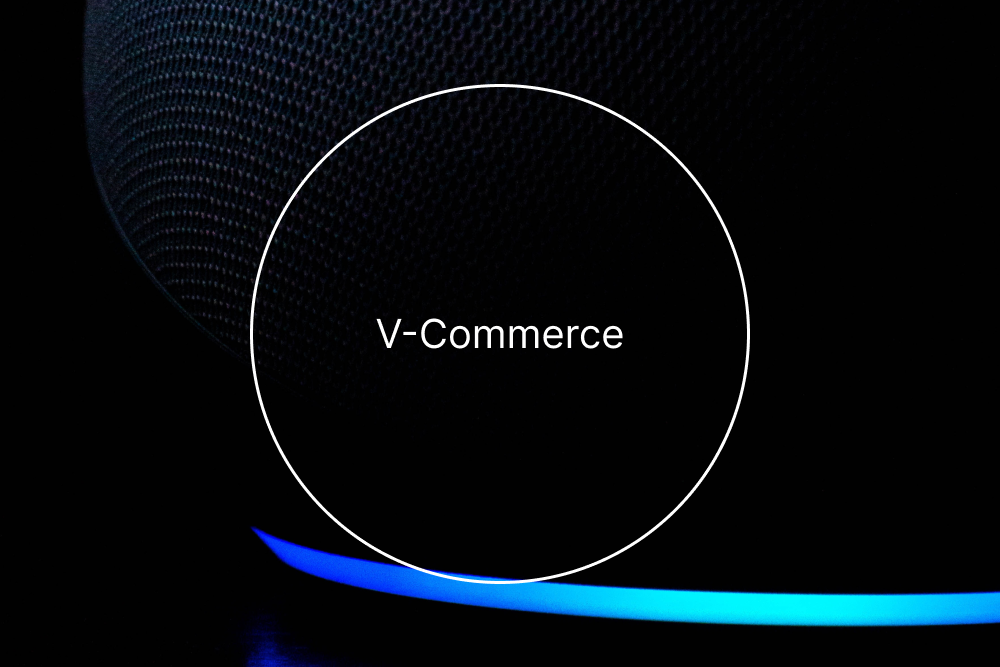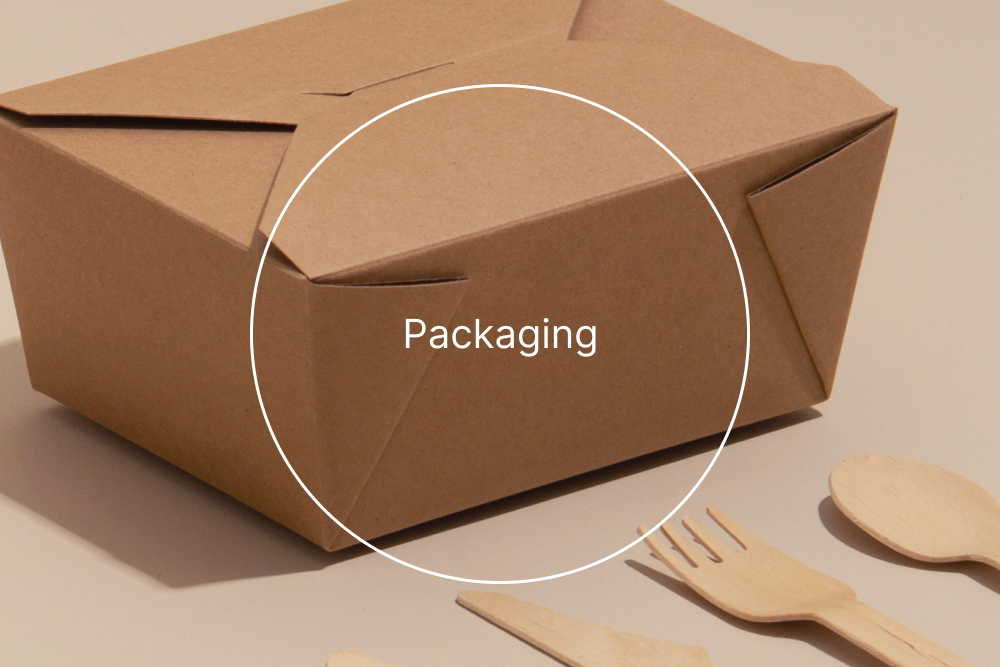23 Feb 2023
Ecommerce trends to watch in 2023

Ecommerce trends are changing quickly, and it’s important to keep up with them so you stay ahead of your competitors. Here is a selection of the 25 most important ecommerce trends to follow in 2023. Use these as inspiration for your ecommerce strategy planning for the year, and adapt them to your industry and reality.
You need to ask yourself some key questions to ensure the success of your business strategy. What makes a good ecommerce site? What sells best online right now? What would help me compete with the competition? What are my customers really looking for?
Shopping Experience Trends
1. ReCommerce (Second Hand Marketplaces)
ReCommerce is buying or selling second hand products online. Marketplaces dedicated to reCommerce have multiplied in recent years and their business model has expanded. ReCommerce sites are no longer limited to the simple transaction of buying and selling, but also offer additional services such as payment in installments, product recovery, delivery and installation.
Some platforms such as Vinted make it their core business. This application allows users to sell or buy used clothes. Some brands will also offer second hand marketplaces directly in their online store. For example, the Quebec-based company Womance allows its customers to resell clothing and accessories purchased at Womance when they are ready to dispose of them, right on their website.
2. Interactive and Live Shopping
Live shopping is a new trend that allows consumers to shop online in real time. This trend is growing rapidly as it allows customers to feel connected to brands and companies, and to receive live advice from experts. For example, live shopping on Amazon allows content creators and influencers to livestream to sell products directly on the marketplace.
Some ecommerces will offer Live Shopping features such as virtual assistants or an appointment booking system to make a video conference with a consultant in store.
3. Sustainability
Responsible ecommerce is an approach which consists in integrating the stakes of sustainable development in the activities of companies. This includes better waste management, reduced energy consumption and raw materials, as well as greater transparency on the conditions of production and delivery.
Today’s consumers are more and more sensitive to environmental and social issues and expect companies to take action on these issues. This trend is not about to slow down, and many ecommerce companies have already integrated this way of thinking into their business model. Many organizations are making a sustainable shift with, among others, the BCorp certification.
To learn some tips and implement sustainable and responsible practices in your ecommerce business, check out this sustainability guide.
4. Social Selling
Social selling is a sale technique that consists in using social networks to create relationships between potential customers and influencers, in order to encourage them to buy a product or a service. This technique is particularly effective for B2C companies, as it allows them to target consumers based on their interests and buying behaviour.
Social platforms like Meta (Facebook, Instagram), TikTok, YouTube and Twitter are developing and launching features that make the shopping journey increasingly seamless for users. For example, TikTok has introduced 3 new types of shopping placements for brands on its app. By 2023, we will see the shopping journey from social platforms become shorter and shorter in order to maximize conversion.
5. Hyper-personalization Through Artificial Intelligence (AI)
Hyper-personalization is a term that describes a merchant’s ability to deliver the most unique experience possible to each customer. This can be accomplished in a variety of ways, but one of the most effective ways is through the use of artificial intelligence (AI), big data or data analytics. Consumers are increasingly demanding their online shopping experiences, so companies must adapt to meet their needs. The goal is to present the most interesting content to the target, via the most appropriate channel, and at the most appropriate time to close the sale. For example, we can often see hyper-personalization applications in the context of loyalty programs.

6. V-Commerce
Voice assistant commerce (V-Commerce) is a new and growing trend in ecommerce. According to a study by Juniper Research, the number of V-Commerce users is expected to grow from 2.5 million in 2018 to 8 million in 2023. Voice assistants are becoming more common in the home and are slowly emerging as a sales channel in their own right. Consumers are using these devices to make purchases, but also to find product reviews, compare prices, or track their orders.
Merchants must therefore adjust their online store to the new consumption modes by including voice-search tools on their search engine.
7. Data Protection
In 2023, more and more ecommerce companies will be offering a unique experience to their visitors. This means that they will have to adopt a global strategy consistent with their values and in line with the protection of the privacy of internet users since customers will be increasingly demanding the protection of their sensitive data. Brands will have to put in place tactics to limit the risk and gain the trust of potential buyers. It will therefore be essential to present a policy for data protection, which is one of the main concerns in the world of ecommerce, but especially one of the brakes on purchasing.
This is especially timely given the impending update of Bill 25 in Québec, the Modernization of Personal Information Protection Legislation Act. It will make major changes to the legislative framework for the protection of personal information, including amendments to two important pieces of legislation, including the Private Sector Privacy Act. Merchants with online stores will need to be on the lookout for news on this topic to prepare and comply.
8. Mobile Shopping
Although it’s a trend that has been around for a few years, mobile shopping will continue to grow in popularity in 2023. The number of Internet users using a smartphone to shop online has increased dramatically in recent years. In fact, according to the latest statistics, nearly half of all online shoppers use a cell phone to make purchases. It is therefore unthinkable to neglect the UX and UI experience on mobile in an ecommerce context.
9. Subscription
An ecommerce subscription model is a type of online store where customers pay a monthly or annual fee to access a product or service. Many companies have adopted this model, including streaming companies like Netflix and Spotify. This model can also be seen in consumer goods stores like food, hygiene products and more. Subscriptions are proving to be a growing trend, and are expected to keep growing in 2023. It’s a very beneficial model for merchants who can provide an almost guaranteed, recurring income. An application like Recharge allows ecommerce sites to set up a subscription program in a very simple and efficient way.
10. Multichannel eCommerce
Multi-channel selling is a business strategy that consists of selling your products or services through several distribution channels. This type of selling allows companies to be present on several platforms and thus increase their chances of reaching a wider audience.
A few years ago, many ecommerce sites took a single channel approach by selling their products and services on their website and social media platforms. Now, the majority of them will multiply their sales channels to increase their reach and decrease the risk. Most of them are turning to marketplaces like Amazon, Walmart, Costco, Wayfair, Best Buy, and more.
Here’s a look at the new features announced by Amazon that will allow sellers to push their multichannel strategy even further.
11. Omnichannel Commerce
Omnichannel is a very hot trend right now and it is only getting hotter. Omnichannel commerce is an integrated multichannel commerce that allows companies to sell to their customers through all the communication and distribution channels offered: the physical point of sale, website, marketplaces, social medias, mobile applications, online stores, etc.
Solutions like Shopify are trying to equip businesses to unify the experience across different sales and communications channels (like with the Shopify POS suite for example). The idea is to have a consistent and uniform experience across the different channels.
12. Payment Methods (BNPL)
In 2023, payment methods will be more and more numerous and varied. Consumers will increasingly use e-wallets, credit cards and debit cards. They will also be able to pay via their cell phone or laptop. In the ecommerce checkout, there are also payment options such as Apple pay, Shop Pay, Amazon pay and many others.
We also see a strong popularity for split payment methods (BNPL or buy now pay later) like Sezzle. This kind of tool allows buyers to purchase a product and spread the payments over several weeks. This kind of tactic can also limit the disincentives to purchase as well as increase the average basket and the conversion rate.
13. User Generated Content (UGC)
User-generated content (UGC) is a type of content that comes from a company’s customers rather than the company itself. Customer reviews, ratings, comments, testimonials, photos and videos are all examples of UGC content. This is a trend that has become increasingly important in recent years, as millennials and Generation Z place a high value on peer reviews in their purchasing process. Whether it’s on social networks or directly in the ecommerce site’s product sheets, user-generated content can have a major impact in decision making. It is a powerful tool to demonstrate brand credibility, but also to build trust with customers.
Technology Trends
14. Composable Commerce and MACH Architecture
Composable commerce is a micro services-oriented architecture that enables e-commerce developers to quickly build and deploy cutting-edge e-commerce functionality. Microservices, API, Cloud and Headless (MACH) architecture is a modern approach to enterprise architecture that enables organizations to quickly develop and deploy feature-rich and content-rich applications. This approach breaks down technology silos and allows organizations to create new experiences from their existing systems.
To better understand the difference between monolithic architecture and MACH architecture, watch this video.
Related Article : Shopify Launches Commerce Components
15. The End of Third-Party Cookies to Focus on First-Party and Zero-Party Data
Indeed, third-party cookies are being progressively removed by the main browsers and GAFAM (Google, Apple, Facebook, Amazon and Microsoft) will focus on first-party and zero-party data. The goal is to collect as much data as possible on Internet users to better target and convert them. First-party data is data that you collect yourself from your customers, for example via a registration form or an online survey. Zero-party data is data that you collect indirectly from your customers, for example by tracking their activity on your website or by identifying them through cookies.
We will therefore see strategies that focus on this type of data rise in popularity (SMS marketing automation strategies or newsletter strategies with Klaviyo, for example).
16.Augmented Reality and Virtual Reality in the Shopping Experience (AR and VR)
Augmented reality (AR) and virtual reality (VR) are emerging technologies that are already having an impact on the consumer shopping experience. Ecommerce companies are using it to help shoppers better visualize products and make informed purchasing decisions.
These new technologies can greatly enhance the shopping experience and even create new consumption patterns. Augmented reality (AR) is one of the key trends in ecommerce in 2023. AR is a technology that allows users to overlay digital information in the real world. Virtual reality (VR) is expected to be a leading technology in online stores and online shopping experiences
Many retailers are already experimenting with virtual and augmented reality applications, including allowing customers to see what a product looks like before they buy it. Shopify reports that interacting with a product in 3D or AR can result in a 94% higher conversion rate compared to those presented statically.
To learn more about the applications of augmented reality and virtual reality in ecommerce, watch this video.
17. Ecommerce Cybersecurity
Cybersecurity is one of the top ecommerce trends in 2023. The threat of cyberattacks is constantly increasing, and retailers must take steps to protect their data and their customers. This includes all the ways in which computers, networks and data are protected from attack or new laws like Quebec’s Law 25. Changing consumer patterns, including the rise of online shopping, have led to an increase in the number of cyberattacks.
This year, many companies have focused on applying Cybersecurity best practices in a preventive way. This is a very important topic for the company itself, but also for all the cyber buyers present in their database.
18. Big Brands On-Site Marketplaces
In 2023, many major brands will launch their own on-site marketplaces in order to take advantage of the consumer craze for online shopping. For example, a giant like Walmart now offers an online marketplace comparable to the Amazon platform. This trend will allow consumers to access a wider range of products and services, while benefiting from the trust and reputation of brands.
Major brand sites are becoming direct sales channels for their suppliers. This is advantageous for large retailers as it allows them to achieve sales results without taking risks and without taking responsibility for merchandise inventories. It’s also an interesting way for brands to test the market’s excitement and satisfaction with a product by first listing it on their marketplace before putting it on their shelves.
Logistics and Ecommerce Process Trends

19. Reusable and Green Packaging
Green packaging and reusable packaging are growing trends in ecommerce as consumers become more aware of the impact of packaging on the environment. Many companies have already adopted greener packaging, and this trend is likely to continue in the coming years.
Several packaging solutions for ecommerce have been emerging in North America for several years, and this Green Business Bureau article shares some of them with you. To take just a few examples, Noissueoffers different types of 100% biodegradable bags and Repack offers a reusable packaging service.
To learn more about eco-friendly packaging and other actions you can take to have a greener ecommerce,read this article.
20. Pick up & Shipping Courier Services
With the rise of ecommerce, consumers are increasingly used to buying online and expect shorter and shorter delivery times. To meet these new expectations, merchants must adapt and implement new delivery services, such as same day delivery. Giants like Amazon are making these types of options available and setting a precedent in customer expectations.
Some specialized logistics services may allow merchants to deliver on the same day in certain major centers.
Post Office Boxes are becoming increasingly popular and allow consumers to collect and manage their online purchases in one place. These ecommerce lockboxes are usually offered in large cities, in apartment towers or in a network of partner stores. Some of them are suitable for storing large products (e.g. IKEA) or even products that need to meet a certain temperature (e.g. Cook it).
We can already see the trend of same day delivery accelerating: some companies are talking about Q-Commerce (Quick commerce) where they aim for deliveries in less than an hour.
21. Buy Online Pick Up in Store (BOPIS)
Customers can buy online and pick up their purchases at the store nearest to them. The advantages for customers are obvious: they can avoid delivery fees, get their purchases faster and save on queues. They can also be reassured about the return system. Some buyers will even take the opportunity to make additional purchases during their visit. It is therefore a very interesting strategy to increase the turnover of companies that have physical stores as well as an ecommerce.
22. Robots for Logistics Warehouses
Logistics warehouses are already largely automated, but robots have a long way to go before they can completely replace humans. Robots are becoming faster and more flexible, making them more suitable for logistics warehouses.
In a context of labour shortage, optimized and automated logistics processes can be a major advantage in the market.
23. Sustainable Delivery and Drones
By 2023, more and more businesses will be working to reduce their carbon footprint. Online shopping is no exception. Many websites are already offering greener delivery options such as local bicycle transportation. Some transportation companies are currently electrifying truck fleets to meet this new market demand. Delivery services are continuing, with companies like Amazon, DHL and UPS developing their own drone delivery services.
We’re also seeing a trend related to “uberization”: large ecommerce companies like Amazon are building a network of independent male and female delivery drivers to meet the growing demand in all regions.
The fourth quarter can be a challenging time for logistics managers. To better prepare and avoid a nightmare, check out our article on December’s logistics challenges.
Macro Trends that Will Impact Ecommerce
24. What Impact Will the Metaverse Have on Ecommerce?
The metaverse is a 3D virtual universe where users can meet and interact. It is an immersive online space that pushes the boundaries of virtual reality and offers a more immersive experience. The impact of public adoption of metaverse trends can be expected to have a major impact on ecommerce. Brands will be able to sell virtual goods (such as digital clothing for avatars) and physical goods or services (online sports classes, etc.). The metaverse will gradually eliminate the physical barriers that still exist for businesses.
25. How Will the Economic Recession Impact Ecommerce Businesses?
The recession will have a negative impact on ecommerce businesses as consumer spending will be reduced. This means that ecommerce companies will have to focus on creating value and retaining existing customers, rather than growing sales. Consumers will likely be more cautious with their spending and less willing to purchase non-essential products, which could lead to lower online sales. Customers will likely be looking for promotions, so this may create business opportunities for companies that offer discounted products. Some industries will certainly be more affected by the recession than others.
Would you like to talk to an expert about your ecommerce? Contact us now!
📍 330-330 rue Saint-Vallier Est, G1K 9C5, Québec, QC, Canada
Inspired by what you’ve read?
Our team of experts can help you take your eCommerce to the next level!


